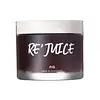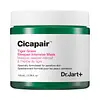What's inside
What's inside
 Key Ingredients
Key Ingredients

 Benefits
Benefits

 Concerns
Concerns

 Ingredients Side-by-side
Ingredients Side-by-side

Water
Skin ConditioningFicus Carica Fruit Extract 21.608%
HumectantDipropylene Glycol
HumectantGlycerin
HumectantSaccharide Hydrolysate
HumectantPropanediol
SolventNiacinamide
Smoothing1,2-Hexanediol
Skin ConditioningSodium Polyacrylate Starch
AbsorbentC12-14 Pareth-12
EmulsifyingPolyglycerin-3
HumectantMethyl Gluceth-20
HumectantMethyl Gluceth-10
EmulsifyingGlycereth-26
HumectantCitrus Unshiu Peel Extract
MaskingAgar
MaskingCaprylic/Capric Triglyceride
MaskingXanthan Gum
EmulsifyingSaccharum Officinarum Extract
MoisturisingRibes Nigrum Leaf Extract
PerfumingFructooligosaccharides
HumectantEthylhexylglycerin
Skin ConditioningBarosma Betulina Leaf Extract
PerfumingLithospermum Erythrorhizon Root Extract
Skin ConditioningPullulan
Disodium EDTA
Butylene Glycol
HumectantRibes Nigrum Fruit Extract
AstringentPunica Granatum Fruit Extract
AntioxidantSalvia Hispanica Seed Extract
EmollientHouttuynia Cordata Extract
Skin ConditioningCentella Asiatica Extract
CleansingPentylene Glycol
Skin ConditioningMadecassoside
AntioxidantPrunus Armeniaca Fruit Extract
Skin ConditioningPassiflora Edulis Fruit Extract
Skin ConditioningPapain
Skin ConditioningAmmonium Acryloyldimethyltaurate/Vp Copolymer
Algin
MaskingDextrin
AbsorbentWater, Ficus Carica Fruit Extract 21.608%, Dipropylene Glycol, Glycerin, Saccharide Hydrolysate, Propanediol, Niacinamide, 1,2-Hexanediol, Sodium Polyacrylate Starch, C12-14 Pareth-12, Polyglycerin-3, Methyl Gluceth-20, Methyl Gluceth-10, Glycereth-26, Citrus Unshiu Peel Extract, Agar, Caprylic/Capric Triglyceride, Xanthan Gum, Saccharum Officinarum Extract, Ribes Nigrum Leaf Extract, Fructooligosaccharides, Ethylhexylglycerin, Barosma Betulina Leaf Extract, Lithospermum Erythrorhizon Root Extract, Pullulan, Disodium EDTA, Butylene Glycol, Ribes Nigrum Fruit Extract, Punica Granatum Fruit Extract, Salvia Hispanica Seed Extract, Houttuynia Cordata Extract, Centella Asiatica Extract, Pentylene Glycol, Madecassoside, Prunus Armeniaca Fruit Extract, Passiflora Edulis Fruit Extract, Papain, Ammonium Acryloyldimethyltaurate/Vp Copolymer, Algin, Dextrin
Water
Skin ConditioningDipropylene Glycol
HumectantPropanediol
SolventGlycerin
HumectantCaprylyl Methicone
Skin Conditioning1,2-Hexanediol
Skin ConditioningNiacinamide
SmoothingTrehalose
HumectantVinyl Dimethicone
Butylene Glycol
HumectantEryngium Maritimum Callus Culture Filtrate
Skin ConditioningFusidium Coccineum Ferment Filtrate
Skin ConditioningCetyl Dimethicone
EmollientHouttuynia Cordata Extract
Skin ConditioningIlex Aquifolium Leaf Extract
Skin ConditioningDimethiconol
EmollientChondrus Crispus Extract
Skin ConditioningAchillea Millefolium Oil
CleansingAmmonium Acryloyldimethyltaurate/Vp Copolymer
Acrylates/C10-30 Alkyl Acrylate Crosspolymer
Emulsion StabilisingDehydroxanthan Gum
Emulsion StabilisingPolyvinyl Alcohol
Saccharum Officinarum Extract
MoisturisingTromethamine
BufferingCaprylyl Glycol
EmollientSodium Acrylate/Sodium Acryloyldimethyl Taurate Copolymer
Emulsion StabilisingPolyisobutene
Coconut Oil Methylpropanediol Esters
EmollientAdenosine
Skin ConditioningMelia Azadirachta Leaf Extract
Skin ConditioningMelia Azadirachta Flower Extract
Skin ConditioningDisodium EDTA
Caprylyl/Capryl Glucoside
CleansingPanthenol
Skin ConditioningSorbitan Oleate
EmulsifyingBamboo Vinegar
AntimicrobialGlycine Soja Peptide
Skin ConditioningStreptococcus Thermophilus Ferment
HumectantMadecassoside
AntioxidantEthylhexylglycerin
Skin ConditioningCoccinia Indica Fruit Extract
Skin ConditioningCurcuma Longa Root Extract
MaskingOcimum Sanctum Leaf Extract
Skin ConditioningAmber Powder
Solanum Melongena Fruit Extract
Skin ConditioningHedera Helix Extract
AntimicrobialDextrin
AbsorbentTheobroma Cacao Seed Extract
AntioxidantCorallina Officinalis Extract
Skin ConditioningMoringa Oleifera Seed Oil
EmollientAsiaticoside
AntioxidantCentella Asiatica Leaf Extract
Skin ConditioningAsiatic Acid
Skin ConditioningMadecassic Acid
Skin ConditioningCalcium Chloride
AstringentCentella Asiatica Extract
CleansingMagnesium Sulfate
Water, Dipropylene Glycol, Propanediol, Glycerin, Caprylyl Methicone, 1,2-Hexanediol, Niacinamide, Trehalose, Vinyl Dimethicone, Butylene Glycol, Eryngium Maritimum Callus Culture Filtrate, Fusidium Coccineum Ferment Filtrate, Cetyl Dimethicone, Houttuynia Cordata Extract, Ilex Aquifolium Leaf Extract, Dimethiconol, Chondrus Crispus Extract, Achillea Millefolium Oil, Ammonium Acryloyldimethyltaurate/Vp Copolymer, Acrylates/C10-30 Alkyl Acrylate Crosspolymer, Dehydroxanthan Gum, Polyvinyl Alcohol, Saccharum Officinarum Extract, Tromethamine, Caprylyl Glycol, Sodium Acrylate/Sodium Acryloyldimethyl Taurate Copolymer, Polyisobutene, Coconut Oil Methylpropanediol Esters, Adenosine, Melia Azadirachta Leaf Extract, Melia Azadirachta Flower Extract, Disodium EDTA, Caprylyl/Capryl Glucoside, Panthenol, Sorbitan Oleate, Bamboo Vinegar, Glycine Soja Peptide, Streptococcus Thermophilus Ferment, Madecassoside, Ethylhexylglycerin, Coccinia Indica Fruit Extract, Curcuma Longa Root Extract, Ocimum Sanctum Leaf Extract, Amber Powder, Solanum Melongena Fruit Extract, Hedera Helix Extract, Dextrin, Theobroma Cacao Seed Extract, Corallina Officinalis Extract, Moringa Oleifera Seed Oil, Asiaticoside, Centella Asiatica Leaf Extract, Asiatic Acid, Madecassic Acid, Calcium Chloride, Centella Asiatica Extract, Magnesium Sulfate
 Reviews
Reviews

Ingredients Explained
These ingredients are found in both products.
Ingredients higher up in an ingredient list are typically present in a larger amount.
1,2-Hexanediol is a synthetic liquid and another multi-functional powerhouse.
It is a:
- Humectant, drawing moisture into the skin
- Emollient, helping to soften skin
- Solvent, dispersing and stabilizing formulas
- Preservative booster, enhancing the antimicrobial activity of other preservatives
Ammonium Acryloyldimethyltaurate/Vp Copolymer (let's call it AAVC for short) is a synthetically created polymer. It's used as a film-forming agent and used to thicken the consistency of products.
AAVC is able to increase the consistency and viscosity of products due to its large molecule size. It also prevents ingredients from separating.
Butylene Glycol (or BG) is used within cosmetic products for a few different reasons:
Overall, Butylene Glycol is a safe and well-rounded ingredient that works well with other ingredients.
Though this ingredient works well with most skin types, some people with sensitive skin may experience a reaction such as allergic rashes, closed comedones, or itchiness.
Learn more about Butylene GlycolCentella Asiatica Extract (Centella) is derived from an herb native to Southeast Asia. It is famous for its anti-inflammatory and soothing properties.
Centella is rich in antioxidants and amino acids, such as Madecassic Acid and Asiaticoside.
Studies show the compounds in centella help with:
The combination of all these properties makes centella effective at soothing, hydrating, and protecting the skin.
Other great components of centella include Vitamin A, vitamin C, several B vitamins, and Asiatic Acid.
Fun fact: Centella has been used as a medicine and in food for many centuries. As a medicine, it is used to treat burns, scratches, and wounds.
Learn more about Centella Asiatica ExtractDextrin is used to thicken a product and helps bind ingredients together. It is created from starch and glycogen.
As an emulsifier, dextrin prevents ingredients from separating. This helps elongate a product's shelf life.
Studies show coating UV filters with dextrin prevents these ingredients from being absorbed. This helps UV ingredients last longer on the skin.
Learn more about DextrinDipropylene Glycol is a synthetically created humectant, stabilizer, and solvent.
This ingredient helps:
Dipropylene glycol is technically an alcohol, but it belongs to the glycol family (often considered part of the ‘good’ alcohols). This means it is hydrating and gentle on skin unlike drying solvent alcohols like denatured alcohol.
As a masking agent, Dipropylene Glycol can be used to cover the smell of other ingredients. However, it does not have a scent.
Studies show Dipropylene Glycol is considered safe to use in skincare.
Learn more about Dipropylene GlycolDisodium EDTA plays a role in making products more stable by aiding other preservatives.
It is a chelating agent, meaning it neutralizes metal ions that may be found in a product.
Disodium EDTA is a salt of edetic acid and is found to be safe in cosmetic ingredients.
Learn more about Disodium EDTAEthylhexylglycerin (we can't pronounce this either) is commonly used as a preservative and skin softener. It is derived from glyceryl.
You might see Ethylhexylglycerin often paired with other preservatives such as phenoxyethanol. Ethylhexylglycerin has been found to increase the effectiveness of these other preservatives.
Glycerin is already naturally found in your skin. It helps moisturize and protect your skin.
A study from 2016 found glycerin to be more effective as a humectant than AHAs and hyaluronic acid.
As a humectant, it helps the skin stay hydrated by pulling moisture to your skin. The low molecular weight of glycerin allows it to pull moisture into the deeper layers of your skin.
Hydrated skin improves your skin barrier; Your skin barrier helps protect against irritants and bacteria.
Glycerin has also been found to have antimicrobial and antiviral properties. Due to these properties, glycerin is often used in wound and burn treatments.
In cosmetics, glycerin is usually derived from plants such as soybean or palm. However, it can also be sourced from animals, such as tallow or animal fat.
This ingredient is organic, colorless, odorless, and non-toxic.
Glycerin is the name for this ingredient in American English. British English uses Glycerol/Glycerine.
Learn more about GlycerinHouttuynia Cordata Extract is more commonly known as Heart Leaf, Fish Mint, or Chameleon plant.
The components found in Heart Leaf give it antioxidant, hydrating, antimicrobial, and anti-inflammatory properties.
Heart Leaf is rich in flavonoids such as quercetin, apigenin, and more. It also contains polysaccharides, the most common type of carbs in food.
Flavonoids have been shown to be effective antioxidants. They help neutralize free-radical molecules. Free-radical molecules are unstable molecules that may damage our skin cells and DNA. The flavonoids in Heart Leaf also help soothe the skin.
Polysaccharides are naturally found in our skin. They play a role in hydrating and repairing the top layer of skin. The polysaccharides in Heart Leaf help moisturize our skin.
Studies show decanoyl acetaldehyde, a component of Heart Leaf oil, is effective at killing bacteria.
The name 'Fish Mint' comes from the herb's natural fishy smell. Is is native to southeast Asia and used throughout the continent for traditional cooking and medicine.
Learn more about Houttuynia Cordata ExtractMadecassoside comes from the super popular skin-soothing ingredient, Centella asiatica. It is one of four active compounds found in the extract of Centella Asiatica.
Madecassoside has antioxidant, anti-inflammatory, and hydrating properties. It contains fatty acids, amino acids, beta-carotene, and phytochemicals.
One study found using Madecassoside with ascorbic acid helped reduce the signs of aging and improved skin hydration.
Learn more about MadecassosideNiacinamide is a multitasking form of vitamin B3 that strengthens the skin barrier, reduces pores and dark spots, regulates oil, and improves signs of aging.
And the best part? It's gentle and well-tolerated by most skin types, including sensitive and reactive skin.
You might have heard of "niacin flush", or the reddening of skin that causes itchiness. Niacinamide has not been found to cause this.
In very rare cases, some individuals may not be able to tolerate niacinamide at all or experience an allergic reaction to it.
If you are experiencing flaking, irritation, and dryness with this ingredient, be sure to double check all your products as this ingredient can be found in all categories of skincare.
When incorporating niacinamide into your routine, look out for concentration amounts. Typically, 5% niacinamide provides benefits such as fading dark spots. However, if you have sensitive skin, it is better to begin with a smaller concentration.
When you apply niacinamide to your skin, your body converts it into nicotinamide adenine dinucleotide (NAD). NAD is an essential coenzyme that is already found in your cells as "fuel" and powers countless biological processes.
In your skin, NAD helps repair cell damage, produce new healthy cells, support collagen production, strengthen the skin barrier, and fight environmental stressors (like UV and pollution).
Our natural NAD levels start to decline with age, leading to slower skin repair, visible aging, and a weaker skin barrier. By providing your skin niacinamide, you're recharging your skin's NAD levels. This leads to stronger, healthier, and younger looking skin.
Another name for vitamin B3 is nicotinamide. This vitamin is water-soluble and our bodies don't store it. We obtain Vitamin B3 from either food or skincare. Meat, fish, wheat, yeast, and leafy greens contain vitamin B3.
The type of niacinamide used in skincare is synthetically created.
Learn more about NiacinamidePropanediol is an all-star ingredient. It softens, hydrates, and smooths the skin.
It’s often used to:
Propanediol is not likely to cause sensitivity and considered safe to use. It is derived from corn or petroleum with a clear color and no scent.
Learn more about PropanediolThis ingredient is also called sugarcane extract. It is a moisturizing humectant and has skin soothing properties.
Similar to hyaluronic acid, sugarcane can attract moisture to your skin.
Glycolic acid is a derivative of sugarcane. While glycolic acid is an AHA with exfoliating properties, sugarcane is not an AHA.
A study from 2021 found the compounds in sugarcane extract to have antioxidant, antimicrobial, and anti-inflammatory activity. The study also suggests these compounds can inhibit skin ageing enzymes and promote collagen synthesis.
Learn more about Saccharum Officinarum ExtractWater. It's the most common cosmetic ingredient of all. You'll usually see it at the top of ingredient lists, meaning that it makes up the largest part of the product.
So why is it so popular? Water most often acts as a solvent - this means that it helps dissolve other ingredients into the formulation.
You'll also recognize water as that liquid we all need to stay alive. If you see this, drink a glass of water. Stay hydrated!
Learn more about Water